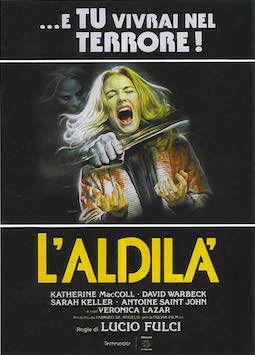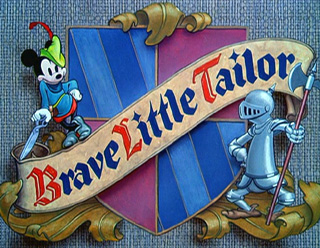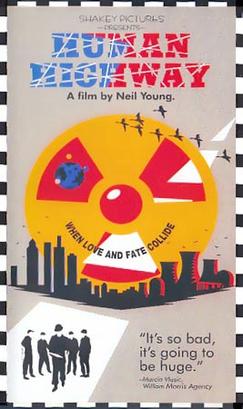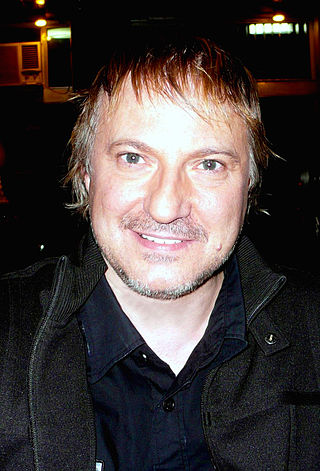
Executive Decision is a 1996 American action thriller film directed by Stuart Baird and written by Jim Thomas and John Thomas, who also produced the film with Joel Silver. It stars Kurt Russell, Steven Seagal, Halle Berry, John Leguizamo, Oliver Platt, Joe Morton, David Suchet and B.D. Wong. It depicts the rescue of an airliner hijacked by terrorists, by a small team placed on the plane in mid-flight. The film was released in the United States on March 15, 1996, by Warner Bros. It grossed $122 million against a $55 million budget.

Wolf Vostell was a German painter and sculptor, considered one of the early adopters of video art and installation art and pioneer of Happenings and Fluxus. Techniques such as blurring and Dé-coll/age are characteristic of his work, as is embedding objects in concrete and the use of television sets in his works. Wolf Vostell was married to the Spanish writer Mercedes Vostell and has two sons, David Vostell and Rafael Vostell.

Daleks' Invasion Earth 2150 A.D. is a 1966 British science fiction film directed by Gordon Flemyng and written by Milton Subotsky, and the second of two films based on the British science-fiction television series Doctor Who. It stars Peter Cushing in a return to the role of the eccentric inventor and time traveller Dr. Who, Roberta Tovey as Susan, Jill Curzon as Louise and Bernard Cribbins as Tom Campbell. It is the sequel to Dr. Who and the Daleks (1965).
Décollage is an art style that is the opposite of collage; instead of an image being built up of all or parts of existing images, it is created by ripping and tearing away or otherwise removing pieces of an original image. The French word "décollage" translates into English literally as "take-off" or "to become unglued" or "to become unstuck". Examples of décollage include etrécissements and cut-up technique. A similar technique is the lacerated poster, a poster in which one has been placed over another or others, and the top poster or posters have been ripped, revealing to a greater or lesser degree the poster or posters underneath.

Little House on the Prairie is an American Western historical drama television series about the Ingalls family, who live on a farm on Plum Creek near Walnut Grove, Minnesota, in the 1870s–90s. Charles, Caroline, Laura, Mary, and Carrie Ingalls are respectively portrayed by Michael Landon, Karen Grassle, Melissa Gilbert, Melissa Sue Anderson, and twins Lindsay and Sydney Greenbush. The show is loosely based on Laura Ingalls Wilder's best-selling series of Little House books.

Godzilla vs. Gigan, is a 1972 Japanese kaiju film directed by Jun Fukuda, written by Shinichi Sekizawa, and produced by Tomoyuki Tanaka, with special effects by Teruyoshi Nakano. Distributed by Toho and produced under their effects-based subsidiary Toho-Eizo, it is the 12th film in the Godzilla franchise, and features the fictional monster characters Godzilla, Gigan, Anguirus, and King Ghidorah. The film stars Hiroshi Ishikawa, Yuriko Hishimi, Tomoko Umeda, and Minoru Takashima, alongside Haruo Nakajima as Godzilla, Kenpachiro Satsuma as Gigan, Koetsu Omiya as Anguirus, and Kanta Ina as Ghidorah. It is the last film in which Godzilla was portrayed by Nakajima after playing the character since the original 1954 film; he subsequently retired from suit acting.

Godzilla vs. SpaceGodzilla is a 1994 Japanese kaiju film directed by Kensho Yamashita, with special effects by Kōichi Kawakita. Distributed by Toho and produced under their subsidiary Toho Pictures, it is the 21st film in the Godzilla franchise, as well as the sixth film in the franchise's Heisei series. The film is notable for the introduction of the monster SpaceGodzilla, as well as the re-introduction of the mecha character M.O.G.U.E.R.A.; its first appearance on-screen since the 1957 film The Mysterians.

Fun and Fancy Free is a 1947 American animated musical fantasy anthology film produced by Walt Disney and Ben Sharpsteen and released on September 27, 1947 by RKO Radio Pictures. The film is a compilation of two stories: Bongo, narrated by Dinah Shore and loosely based on the short story "Little Bear Bongo" by Sinclair Lewis; and Mickey and the Beanstalk, narrated by Edgar Bergen and based on the "Jack and the Beanstalk" fairy tale. Though the film is primarily animated, it also uses live-action segments starring Edgar Bergen to join its two stories.

The Beyond is a 1981 English-language Italian Southern Gothic supernatural horror film directed by Lucio Fulci. It is based on an original story created by Dardano Sacchetti, starring Catriona MacColl and David Warbeck. Its plot follows a woman who inherits a hotel in rural Louisiana that was once the site of a horrific murder, and which may be a gateway to hell. It is the second film in Fulci's Gates of Hell trilogy after City of the Living Dead (1980), and was followed by The House by the Cemetery (1981).

Bagdad Cafe is a 1987 English-language West German film directed by Percy Adlon. It is a comedy-drama set in a remote truck stop and motel in the Mojave Desert in the U.S. state of California. Inspired by Carson McCullers' novella The Ballad of the Sad Café (1951), the film centers on two women who have recently separated from their husbands, and the blossoming friendship that ensues. It runs 95 minutes in the U.S. and 108 minutes in the German version. The song "Calling You", sung by Jevetta Steele and written by Bob Telson, was nominated for the Academy Award for Best Original Song at the 61st Academy Awards.

It Came from Outer Space is a 1953 American science fiction horror film, the first in the 3D process from Universal-International. It was produced by William Alland and directed by Jack Arnold. The film stars Richard Carlson and Barbara Rush, and features Charles Drake, Joe Sawyer, and Russell Johnson. The script is based on Ray Bradbury's original film treatment "The Meteor" and not, as sometimes claimed, a published short story.

Cannibal Ferox, also known as Make Them Die Slowly in the US and as Woman from Deep River in Australia, is a 1981 Italian cannibal exploitation horror film written and directed by Umberto Lenzi. Upon its release, the film's US distributor claimed it was "the most violent film ever made". Cannibal Ferox was also claimed to be "banned in 31 countries", although this claim is dubious. The title derives from the Latin ferox, meaning cruel, wild or ferocious.

Brave Little Tailor is a 1938 American animated short film produced by Walt Disney Productions and released by RKO Radio Pictures, being shown in theaters with Fugitives for a Night. It is an adaptation of the fairy tale The Valiant Little Tailor with Mickey Mouse in the title role. It was directed by Bill Roberts and Burt Gillett and features original music by Albert Hay Malotte. The voice cast includes Walt Disney as Mickey, and Eddie Holden as the Giant. It was the 103rd short in the Mickey Mouse film series to be released, and the fifth for that year.

Human Highway is a 1982 American comedy film starring and co-directed by Neil Young in his film and directional debut under his pseudonym Bernard Shakey. Dean Stockwell co-directed the film and acted along with Russ Tamblyn, Dennis Hopper, and the band Devo. Included is a collaborative performance of "Hey Hey, My My " by Devo and Young with Booji Boy singing lead vocals and Young playing lead guitar.

Deep Red, also known as The Hatchet Murders, is a 1975 Italian giallo film directed by Dario Argento and co-written by Argento and Bernardino Zapponi. It stars David Hemmings as a musician who investigates a series of murders performed by a mysterious figure wearing black leather gloves. The cast also stars Daria Nicolodi, Gabriele Lavia, Macha Méril, and Clara Calamai. The film's score was composed and performed by Goblin, the first in a long-running collaboration with Argento.

Mickey, Donald, Goofy: The Three Musketeers, or simply Walt Disney’s The Three Musketeers is a 2004 American animated direct-to-video musical adventure film based on the film adaptations of the 1844 novel The Three Musketeers by Alexandre Dumas and the Mickey Mouse film series by Walt Disney and Ub Iwerks. As the title suggests, it features Mickey Mouse, Donald Duck, and Goofy as the three musketeers in their first full-length feature film together. This film was directed by Donovan Cook, produced by Walt Disney Pictures and the Australian office of DisneyToon Studios. It was released directly to VHS and DVD on August 17, 2004, by Walt Disney Home Entertainment, and was later re-released on Blu-ray Disc on August 12, 2014, coinciding with the film's 10th anniversary. The film received mixed to positive reviews from critics, who praised its musical numbers, action sequences and faithfulness to the original material, but were mixed on certain aspects and elements.

David Vostell is a German-Spanish composer and film director.

Terror Circus is a 1973 American exploitation horror film directed by Alan Rudolph, and starring Andrew Prine, Manuela Thiess, Sherry Alberoni, Gyl Roland, and Sheila Bromley. It follows three showgirls who are kidnapped in the desert by a psychopath who imprisons women in his barn near the former site of a nuclear disaster.

Scalps is a 1983 American horror film directed by Fred Olen Ray that concerns a vengeful Native American spirit.

Mercedes Vostell was a Spanish writer and from 1998 the artistic director of the Museo Vostell Malpartida (MVM). Mercedes Vostell was the wife of German painter, sculptor, Fluxus, and happening artist Wolf Vostell.



















